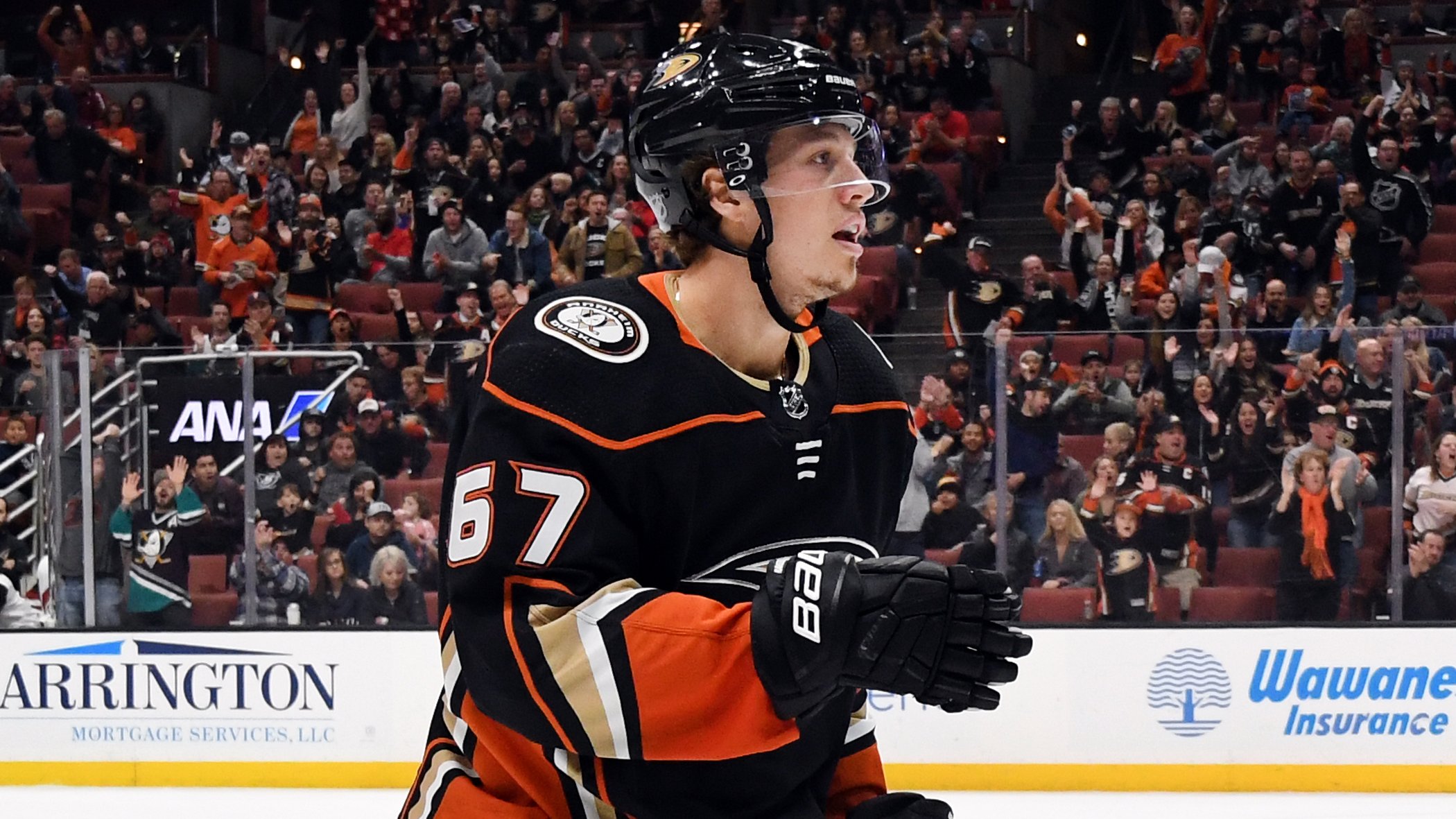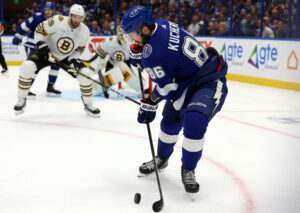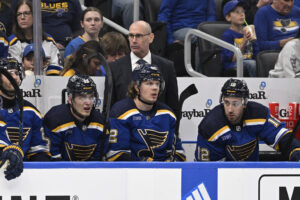NHL player development seems to always result in more questions than answers. How likely is it for a top pick to pan out? What makes a player a “steal”? Last Word On Hockey will be starting a new series on how to properly develop prospects from all different spots throughout the draft. This week’s piece involves draft picks in the back half of the first round and how they were used early in their careers.
NHL Player Development Of First-Round Picks
In the span of 2005 through 2015, there were 84 total selections made between 16th overall and 30th overall on forwards playing in North America. Looking at all 84 forwards, they were split into different categories. Those categories were “Forwards Deemed NHL-Ready and Brought In Immediately When Ready,” “Forwards Near NHL-Ready and Brought In Immediately When Near-Ready,” “Forwards Rushed Slightly,” “Forwards Rushed,” “Forwards Forced,” “A Little Patience,” “Patience,” and “Too Much Patience.”
There were 16 forwards who fell into the fourth category, “forced,” on the list. Of those 16 players, six made their NHL impacts in their DY+3 seasons. Those players are Louis LeBlanc, Kyle Palmieri, Jack Roslovic, Nicklas Jensen, Carter Ashton, and Rickard Rakell. Today, let’s look at Ashton and Rakell.
NHL Player Development Of Carter Ashton
Ashton, drafted 29th overall by the Tampa Bay Lightning in the 2009 NHL draft, came out of the WHL’s Lethbridge Hurricanes organization. In his DY-1 season, Ashton scored five goals and four assists for nine points in 40 games, for 0.225 points per game. That ranked 81st out of the aforementioned 84 forwards in DY-1 production. The following season, he scored 30 goals and 20 assists for 50 points in 70 games, for 0.714 points per game. That ranked 75th out of those same 84 forwards in DY production. Upon getting drafted, Ashton would play two more WHL seasons before getting an NHL shot.
The first season after getting drafted, Ashton would get traded by the Hurricanes to the Regina Pats mid-season. Overall, he scored 24 goals and 27 assists for 51 points in 65 games, for 0.785 points per game. That ranked 58th out of the 82 forwards still outside the NHL in DY+1 production. The next season, Ashton again would be traded. The Pats dealt him to the Tri-City Americans. In total, he scored 33 goals and 38 assists for 71 points in 62 games, for 1.145 points per game. That ranked 22nd among the 70 forwards still outside the NHL in DY+2 production. Ashton would see a shot at the NHL the following year.
How Ashton Was Used
His first professional season would see him get traded, and his first NHL shot did not come with the team that drafted him. Instead, it came with the Toronto Maple Leafs. He would split between the Leafs and Lightning AHL squads, and get a short stint with Toronto’s NHL club. At the AHL level, he played 63 games and scored 21 goals and 17 assists for 38 points. Meanwhile, he would get a 15-game stint at the NHL level, where he averaged 10:25 time on ice per game. He did not score a single point in that small role. Analytically, he was poor. His EVO (-3.5) was terrible, and his EVD (-0.7) was not good. With the poor even-strength metrics, his WAR (-0.7) and GAR (-4.1) were just bad.
In his second season he, unsurprisingly, did not get a single NHL game. Instead, he played entirely at the AHL level, scoring 11 goals and 19 total points in 53 games, a poor stat line compared to the season earlier.
Rough Year Three For NHL Player Development
In his third season, Ashton would get a longer NHL look but still spent some time at the AHL level. Playing 24 AHL games, he scored 16 goals and 23 total points, a big step forward. It allowed him to get an extended NHL look of 32 games. He would average just 6:16 per game, an extremely small role. Unsurprisingly, he only racked up three assists in that near-impossible role for a player to succeed in. Analytically, he was okay, but not that good. His EVO (0.3) was above replacement level, but barely, while his EVD (-0.1) improved as well, though remaining below replacement level. His WAR (0.1) would basically be at replacement level, while his GAR (0.7) was his best metric.
After that third season, in 2013-14, would see just seven more games in the NHL with the Leafs. He had no points. In that same season, in 2014-15, he was dealt by the Leafs back to the Lightning, where he only played AHL games. Ashton would leave for Europe and play in the KHL for five seasons. Playing for four different teams, he scored 57 goals and 36 assists for 93 points across 209 KHL games. He would leave the KHL for the SHL (Sweden) in the 2020-21 season, where he still plays to this day. As of today, counting this year so far, Ashton has scored 20 goals and 22 assists for 42 points in 82 games.
Ashton’s NHL player development was horribly handled by both the Leafs and Lightning. At the same time, he was traded around so many times in both Juniors and professionally that, for any young player, would make growing one’s game extremely difficult.
NHL Player Development Of Rickard Rakell
Rakell was drafted 30th overall by the Anaheim Ducks in the 2011 NHL draft, coming out of the OHL’s Plymouth Whalers organization. Before joining the Whalers, however, he played primarily in the J18 Elit league in Sweden for the club AIK. In 18 games with AIK’s J18 team, Rakell scored 12 goals and four assists for 16 points, for 0.889 points per game. That ranked 33rd among the 84 forwards in DY-1 production. Joining the Whalers in the OHL, he scored 20 goals and 25 assists for 45 points in 49 games, for 0.918 points per game. That ranked 68th among those same 84 players in DY production. After getting drafted, Rakell would play two more OHL seasons before getting his taste of NHL action.
In the following season, Rakell scored 28 goals and 34 assists for 62 points in 60 games, for 1.033 points per game. That ranked 43rd among the 82 forwards who were still outside the NHL in DY+1 production. In his final OHL season, he scored 21 goals and 23 assists for 44 points in 40 games, for 1.1 points per game. That ranked 27th out of the 70 forwards still outside the NHL in DY+2 production. Rakell would make the jump to professional hockey the very next season.
How Rakell Was Used
In his first season, Rakell would split between the AHL and NHL. At the AHL level, Rakell scored 14 goals and 23 assists for 37 points in 46 games, a solid output for a rookie in the AHL. That earned him an 18-game stint in the NHL, where he averaged 11:43 per game. In that role, he scored four assists. Looking at his counting stats, which were disappointing, it’s no surprise his EVO (-2.1) was below replacement level and, generally, very poor. However, his EVD (2.1) was very good for a rookie, giving him some promise moving forward. Overall, his WAR (0.1) and GAR (0.3) were at about replacement level, showing how his defensive metrics carried his game in year one.
The following season, Rakell would play primarily in the NHL. Playing just two AHL games in his second pro season, he managed a goal and three assists for four points. That was just the tip of the proverbial iceberg. In the NHL, he played 71 games and averaged 12:34 per game, a slightly larger role across more games than in year one. In that role, he scored nine goals and 22 assists for 31 points, a big step forward. His EVO (3.3) was much-improved, and his EVD (-0.3) took a step back, but, still decent for a young player. With the increased offensive metrics, Rakell’s WAR (1.0) and GAR (5.2) were strong.
Year Three Break-Out Thanks To Strong NHL Player Development
Playing only in the NHL for year three, Rakell would see a big break-out. Playing 72 games, he averaged 16:04 per game, a big step up from the first two seasons. With the much bigger role, he scored 20 goals and 23 assists for 43 points, a strong stat line. Analytically, he was phenomenal. His EVO (10.3) and EVD (1.3) were great, especially his EVO. That led to his WAR (3.1) and GAR (16) being borderline elite for that season.
Following that third season with the Ducks in 2016-17, he would remain in Anaheim for six and a half more seasons. In that span, he scored 125 goals and 136 assists for 261 points in 385 games. His final season in Anaheim, 2021-22, would see him get dealt halfway through to the Pittsburgh Penguins. In the final 19 games of the year with the Penguins, he would score four goals and nine assists for 13 points. He’s slated to play a big role with the Penguins this upcoming season. Rakell’s NHL player development went exactly how the Ducks wanted. He saw an increased role year-to-year early in his career. His scoring went up alongside it. Rakell’s early years and the work of the Ducks to develop him should be applauded.
Junior league stats via Elite Prospects, NHL stats via Hockey Reference, NHL analytics via Evolving Hockey






